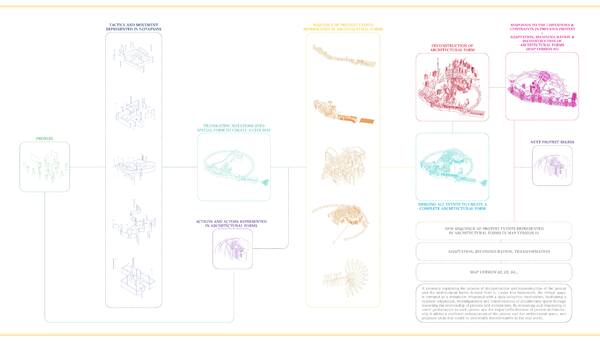How Does Architectural Space Represent And Defend The Resistance of Protests & How Does The Resistance of Protests Redefine Architectural Space?
The research question of this project is developed based on the notion that public space is constantly changing physically, in the ways we perceive and use it. In other words, public spaces can be appropriated and contested, the meaning and function of space can be redefined, and public space can be made available or unavailable to different actors under different circumstances. While human behaviors can shape our cities on a daily basis, my thesis focuses on how we shape our cities through the resistance of protests over a prolonged period of time under an uncertain political climate.
Protests in a specific chosen city are used as starting point and reference to explore the relationship between architectural space and the resistance of protests by studying different forms of resistance in terms of tactics, movements and events. From peaceful protest to violent clashes, from public to private space, from physical to virtual realm, the sequence of protest events is represented in architectural languages in a virtual setting. By studying the architectural representation of protests, the relationship between spatial elements, spatial qualities and the emergence/impact of protests can be analyzed and responded to from a spatial and architectural perspective.
While the research question does not attempt to provide a direct solution to enhance any specific protest event in the real world, it aims to develop a generalized approach, a simulator that allows us to constantly test and evaluate how the transformation and reimagination of architectural space can facilitate or redefine the resistance of protests or vice versa, and produce new ideas that could be potentially transformative in reality. In general, this thesis does not intend to incite subversion nor challenge the state power but is purely an experimental exploration of translating the movements, forms and events of protest into architectural forms, redefining and reimaging architectural space through the resistance of protests.


